Authors:
ABSTRACT
Aim
This prospective, split mouth control study was planned to clinically evaluate shown short-term caries protection of glass
ionomer cement on tooth enamel placed in contact to it, as a result of fluoride release. STUDY DESIGN: The sample consisted of 83
children, aged 4-7 years, visiting a private practice during the years 1999 and 2000. All subjects met the following criteria: a Class II
restoration was needed to a maxillary or mandibular primary molar on both sides of the mouth, the adjacent molars being
radiographically diagnosed as sound or with caries in the relative proximal enamel only.
Methods
A resin modified glass ionomer
restoration (Vitremer, 3M) was placed at the test side chosen by chance, while an amalgam or composite restoration was placed at the
control side. Lesion initiation or progression adjacent to each restoration was categorized in 5 stages radiographically. STATISTICS:
The non-parametric Marginal Homogeneity test for paired observations was used.
Results
Differences between test and control
were not statistically significant (p>0.1). Two years after restorations were placed bitewings were taken from 36 children (41 pairs of
restorations). Uncontrolled brushing with fluoride dentifrice was reported. Mean fluoride treatments performed were 2.2, initial visit
included. Lesion progression was: 14 pairs - no progression in either side; 9 pairs - equal progression by 1 stage in both sides; 9 pairs -
progression by 1 stage at test side, no progression at control side; 6 pairs - progression by 1 stage at control side, no progression at test
side; 3 pairs - various other combinations of scores. CONCLUSIONS: Under these clinical conditions, fluoride release from Class II
Vitremer restorations did not affect the rate of caries progression at the adjacent enamel of proximal primary teeth.
PLUMX METRICS
Publication date:
Keywords:
Issue:
Vol.5 – n.3/2004
Page:
Publisher:
Cite:
Harvard: N. Kotsanos, P. Dionysopoulos (2004) "Lack of effect of fluoride releasing resin modified glass ionomer restorations on the contacting surface of adjacent primary molars. A clinical prospective study", European Journal of Paediatric Dentistry, 5(3), pp136-142. doi:
Copyright (c) 2021 Ariesdue

This work is licensed under a Creative Commons Attribution-NonCommercial 4.0 International License.
